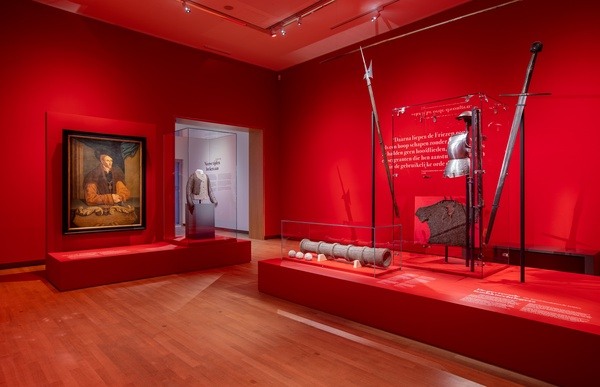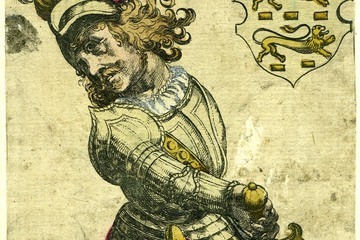The AVROTROS television programme Historisch Bewijs (Historical Evidence) delved into the myth of Grutte Pier’s sword with their broadcast on Friday 30 September. Viewers were given answers to the questions: does the dating of the sword correspond to the time in which Pier lived? And was the gigantic sword, measuring 2.13 metres long and weighing 6.6 kilograms, really used in battle? The results: Yes and yes!
All indicators point to the fact that the sword really could have belonged to the legendary Frisian freedom fighter. Fries Museum curator Diana Spiekhout is delighted: ‘This is a spectacular outcome, the research results are beyond my expectations. I didn’t expect that the sword was used in battle. It is an amazing and remarkable result and it fits the description of Grutte Pier exactly.’

%20avrotros.png?width=600&height=387&mode=crop&converttowebp=1)
research
The experts at Historisch Bewijs, Robert van Langh, Martine Gosselink and Stephanie Archangel, dived into this archetypal Dutch{Frisian?} story about an unknown period in the history of the Netherlands with our curator Diana Spiekhout. Among others, Jeroen Punt from the National Military Museum and experts from the University of Groningen pondered whether the object could really date from the time of Grutte Pier (circa 1480-1520).
Especially for Historisch Bewijs, the treasure left Dutch soil for the first time in its long history, and travelled to Oxford, where it was subject to ground-breaking neutron research. The analysis was conducted with an IMAT instrument at the ISIS Neutron and Muon laboratory at the Rutherford Appleton Laboratory. This instrument transmits rays of cold neutrons through the object; the process is similar to X-rays but instead of light, cold neutrons are used.

grutte pier
The Kimswerder farmer Grutte Pier was born as Pier Gerlofs Donia. The sixteenth-century chronicler Peter van Thabor describes him as (freely translated from Middle Dutch): ‘a big black man with huge eyes, a massive beard and terrifying to behold’. His gigantic stature and supposed superhuman strength earned him the name ‘Grutte (Great) Pier’. In 1515, Pier’s farm in Kimswerd burnt down during a raid by Saxon mercenaries and Franconians. Together with his companions in misfortune, Pier decided to go to war against the Saxon rulers and later the Habsburgs. They founded the Arumer Zwarte Hoop gang. Pier became captain of the ‘seinschipsluyden’ and, possibly entered the fray on the Zuiderzee armed with this sword. To the Frisians, he was a heroic freedom fighter, but the Dutch regarded him as a pirate.

freedom, feuds, purgatory
now until 7th of may 2023

grutte pier
frisian freedom fighter
fries museum collection
The sword has been at the Fries Museum for a very long time. Historical sources place the object in the museum’s custody as early as 1882. The sword, on loan from the municipality of Leeuwarden, has always been exhibited in the Fries Museum since then.
The sword can currently be viewed in the temporary exhibition Freedom, Feuds, Purgatory: The Middle Ages in the North, which tells the story of Frisian freedom in medieval Tota Frisia, a freedom that Pier fought for.